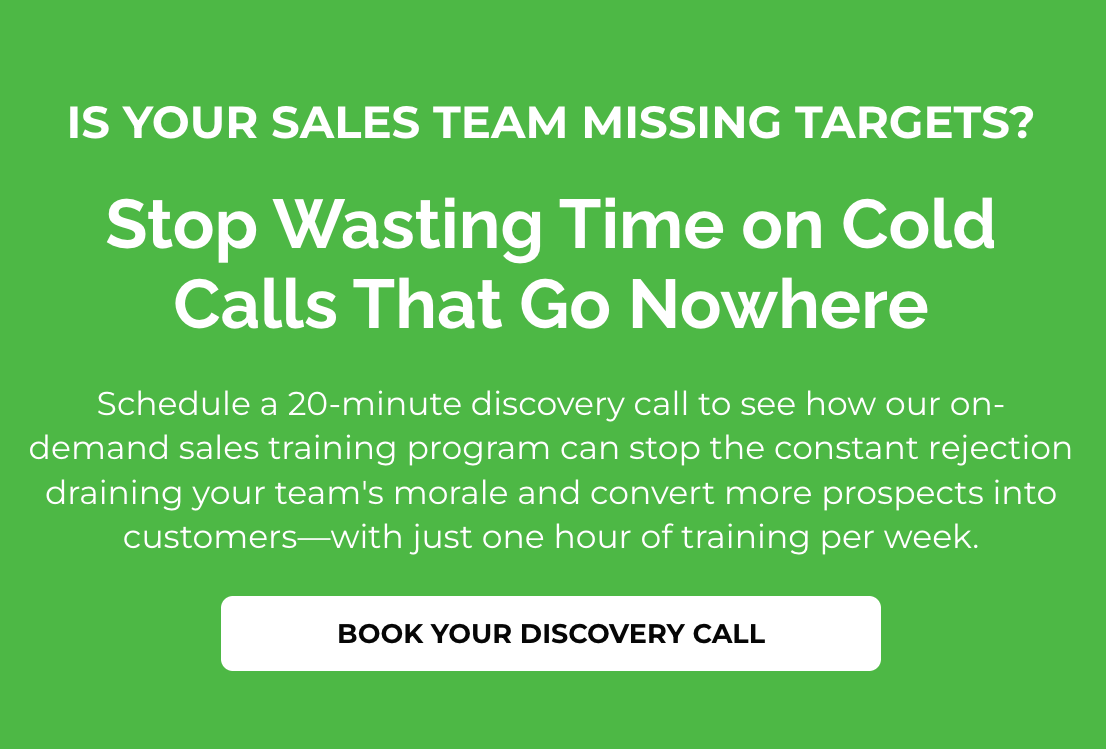How to Qualify a Sales Prospect

“I need to know how to qualify a sales prospect. What telltale signs to look for to know if a prospect is qualified?”
This sales question is a curious one to me because it makes me think that the salesperson doesn’t understand the definition of “qualify” a prospect. If they did, this would not be a question.
What I think the salesperson means to ask is, what are the signs that would qualify a lead as a “suspect.”
There is a vital distinction between “qualifying a prospect” and determining if a lead is qualified to be a “suspect.”
So let’s break down the difference between the two, and then I can answer the question.
Qualifying a Prospect
A prospect needs to have three (3) things to be “qualified.” They are:
Qualifying, Phase #1: Problem Recognition
For a prospect to be qualified, they have to have a problem that your solution solves. It’s that simple. If there’s no problem, there’s no need to continue the sales call. When cold calling, most prospects won’t recognize that they have a problem – this is what makes them cold. If they did recognize a problem, they would have researched for a solution – otherwise known as a “warm lead” for you or one of your competitors. If you are cold calling, you need to know how to create a winning opening value statement that piques the prospect’s interest enough for you to be able to ask the right qualifying questions to determine if a problem exists.
Qualifying, Phase #2: Authority to say YES.
If your prospect has a problem that you can help solve and they are interested in solving it but is not authorized to make or influence the purchasing decision, they are not qualified. How many more presentations are you going to give to prospects that can not make the decision before you realize it’s time to upgrade your sales skills so you know what to do the next time you run into this situation?
Qualifying, Phase #3: Ability to Pay for the Solution.
Sales training programs have forever and a day taught salespeople to not discuss price until after the presentation. Not qualifying your prospect on a price range prior to giving a presentation is a sales mistake 100%.
These are the three phases of qualifying and you will not be able to accurately or adequately qualify a prospect until you have a conversation with them, and ask the right questions. So knowing what to do is one thing. Knowing how to do it is another.
Qualifying a Lead
Because the original question was “What are the telltale signs…” I’m thinking the salesperson is asking what to look for in a lead that would determine if the lead can be considered a suspect and thus contacted to be qualified.
And if that is the case, the answer will vary from company to company but not hard to identify for each person reading this article.
Three (3) Lead Qualifying Categories
You need to look at your company’s history of past deals and put them all into three categories:
- A-List: Deals that are the big whale accounts (typically fewer deals and longer sales cycles)
- Bread & Butter List: Deals that happen at a higher volume and shorter sales cycle
- Dead-end List: Low probability and even when they do sign up, the profits are low
When you make your list for each of these categories, look for the following:
- LOCATION
- EMPLOYEE SIZE
- INDUSTRY
- ANNUAL REVENUE
These are the four primary KPI’s (key prospecting indicators) that most companies use to determine if a lead is qualified to be considered a “suspect.”
When you analyze your whale accounts, you should start to see a particular pattern.
An example might be:
Location: USA/Canada
Employee Size: 1K – 10K
Industry: Computer Software
Annual Revenue: $500M – 1B
Compare that to your “Bread and Butter” top accounts that might look like this:
Location: USA/Canada
Employee Size: 100 – 250
Industry: Computer Software
Annual Revenue: $1 – 10M
And then you may notice your “Dead-end” list looks like this:
Location: Non-USA/Canada
Employee Size: 0 – 25
Industry: Computer Software
Annual Revenue: $0 – 1M
(If you want a fast (but not “free”) solution that does a great job of building your KPI prospect profile and then analyzing your database for leads that will match them up according to your profile, give Uplead a look)
– Michael Pedone
Michael Pedone teaches inside sales teams how to pick up the phone and close business. He is the CEO/FOUNDER of SalesBuzz.com – An online sales training company.

